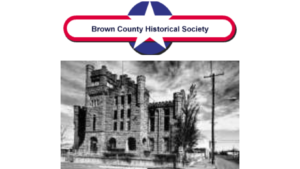
In the fall of 1858, a large band of Native Americans passed through Brown County going to Lampasas, and, then, to Bell County.
There were three squads of Native Americans with large herds of horses. It had been agreed that they would meet at Salt Mountain in Brown County. As one squad made its way to Salt Mountain, a mail carrier saw the Native Americans with many horses riding in the area. The Native Americans did not see him, so he spurred his mule and off they ran to the Elisha Bancroft place, which was about seven miles away, and he gave a warning.
The mail carrier reached the Bancroft’s home about dark and by 10:00 o’clock there were ten men from Comanche, who had gathered and were ready to ride. This was their first Native fight. There were more to come.
The plan was to reach Salt Mountain before the Native Americans and intercept them as they passed the next morning.
During the night, a cold norther blew in, making it hard to travel, but that did not stop the men. The Native Americans had gotten to the mountain first. It was so dark that it was hard to find the horses and the Native Americans. They were able to find the horses quietly standing together. The horses had been driven about seventy-five miles in thirty hours and they were so tired that they did not pay any attention to the Anglo men. They found the horses, but could not locate the Native Americans.
When the light of day came, Don Cox climbed a tree and saw a fire down in the ravine. The Native Americans had gone down in the ravine to be protected from the weather and the fire was only a few yards away. The men opened fire, but within a few seconds, the Native Americans had disappeared. The Native Americans had escaped down deeper into the ravine and the brush was so dense that the Anglo men could not see the Native Americans. Their horses could not go into the brush. They fired their guns into the brush but had to give up the chase.
When the other two squads of Indians that were camped in the immediate vicinity, heard the shooting they immediately left, driving about 400 head of horses and got away. The Anglos did not know the location of the other groups of Native Americans, and were not close enough to see and follow the other groups. The Anglo men discovered the signs of the other groups after they had taken off. They did not have enough men to follow them, and the Native Americans had gotten too great of a start and were riding too fast.
There are no records about what time in the fall of 1858 that this event occurred, but records indicate that some of the same men were at Salt Mountain in October of 1858. On October 12, 1858 the Native Americans killed Moses and Lydia Jackson and two of their children. They took Joshua, age 12 and Rebecca, age 8, and kept them for about ten days. When the fighting men followed a group of Native Americans to Salt Mountain, they found them gone. They had left the two children in the brush.
A party of Native Americans went on a raid into Comanche County, and, when they came back, they were pursued by settlers. The settlers discovered the Native Americans camped at the southeast foot of Salt Mountain. The men came up on the north side of the mountain and were close to the Native Americans before they were seen. There was a young man named Freeman Clark, who was riding a very fine horse. He rashly charged directly into the camp ahead of his comrades. A Native American chief leaped to his feet, seized his bridle reins in one hand and shot Clark off his horse with a pistol in the other. The Native American was instantly riddled with bullets from the posse, and fell dead.
After the battle was over, the Native Americans took two long poles, put one horse ahead of the other, strung a pole from stirrup to stirrup, on each side of both horses, and tied a blanket from pole to pole They placed the body of their fallen comrade on this bed, and started back to Comanche.
{Submitted by Ronnie Lappe and Donnie Lappe}